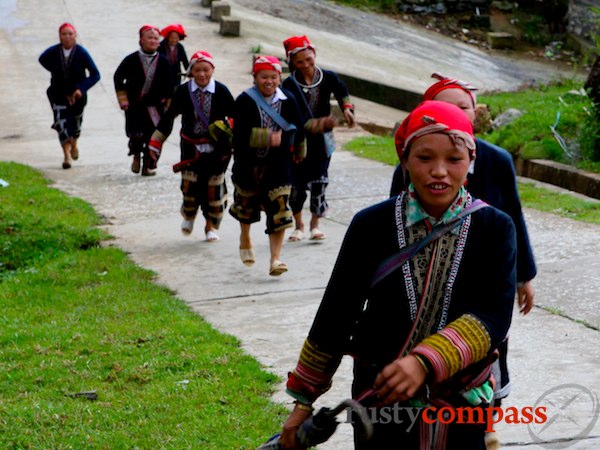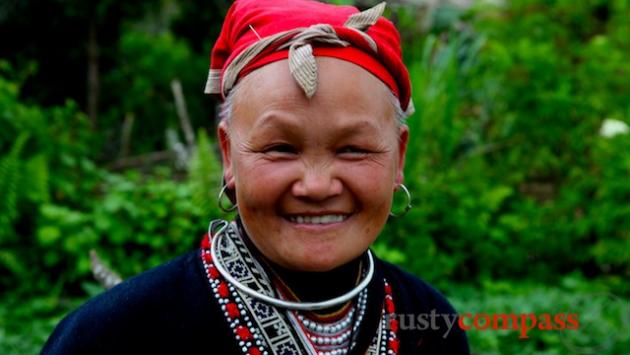These areas are great for walking with stunning views as well as many small villages. If you have a car, you can make the walk as short or long as you wish. The area's beauty is definitely appreciated much more on foot.

Photo: Mark BowyerBlack Hmong home near Ta Phin
The father spoke of the difficulty faced during the past year after severe weather in 2008 wiped out much of the rice harvest. Cold dry winters in these parts of Vietnam mean that they only produce a single rice crop. That crop needs to be sufficient to cover the entire year's rice requirement. When rice stocks run low, families mix rice and corn to prolong the supply.
Outside the house was a sign of continuing progress. Steel girders and power lines marked the imminent arrival of electricity to the village not long after the completion of a sealed road. In early 2010, this family will be connected to the main power grid for the first time.

Photo: Mark BowyerConvent enroute to Ta Phin
From this small Black Hmong village, we headed towards Ta Phin. En route to Ta Phin, there is an old French built convent dating back to 1942. Vietnam's post WWII independence thrust rendered the area unstable and the convent only had a short window of operation. The far north fell to Ho Chi Minh's Viet Minh very early. Sapa was "liberated" from 1950 - four years before the Battle of Dien Bien Phu. The nuns fled and the convent was left to nature.
The incredible distances that were travelled and the hardships endured in the service of the church are amazing. And there's something profound about this ruin in the middle of Vietnam's northern highlands.
The convent may be in ruin but missionaries had some success in proselytising in this area - there are many Catholic converts in the Black Hmong population. The original religious practices of the Black Hmong were animist and these are still evident in many Hmong huts.
I first visited the Red Dzao village of Ta Phin in 1996 and as you'd expect, plenty has changed. Back in 1996, my visit here was troubling. The village was depressingly poor and squalid. All of the children seemed to have terrible coughs and malnutrition was rampant. I also recall being set upon by vicious mangy dogs on arrival. All up, a fairly challenging visit.
Thirteen years later, things have improved remarkably. The Red Dzao community is very obviously enjoying much improved health, living conditions as well as access to education and government services. By any measure they remain poor - but far less so than they once were. The village, once only accessible on foot, now has a sealed road and space for coach parking. There are always compromises to be made and this village has certainly paid a cultural price for being a tourist stop. I didn't find too many complaints from the locals I spoke with however.

Photo: Mark BowyerThe Red Dzao welcome, Ta Phin
The rain had kept tourists away this day so we received a resounding welcome. As we approached the village, a dozen women ran towards us. At first I thought that this would presage suffocating harassment to buy local fabrics and handicrafts. In the end though, it was a friendly walk through the village in the company of a group of Red Dzao women and the hawking was kept in check.
It was a great afternoon that combined the beautiful scenery of the area around Ta Phin with some rewarding time spent with local Hmong and Red Dzao villagers.





There are no comments yet.